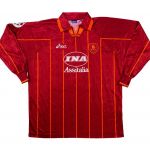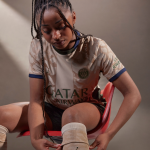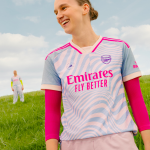
When Asics sponsored Roma
And Totti played with the number 9 on his shoulders
September 10th, 2022
Founded in Japan as a basketball shoe company by Kihachiro Onitsuka, over the years Asics has added materials for all other sports, from running to swimming, from volleyball to rugby, to its production. But football, which is the most played sport in the world, Asics discovered it later, in the late 1980s. Although the entry into football may seem late for a company founded in 1949, in reality the Japanese brand has been able to make its mark. Especially in Italy, where for more than a decade, the brand has built a very strong bond with some of the most emblazoned teams, and Roma is certainly among them.
A special sponsorship, which lasted three seasons, but nonetheless very important since it was one of the first shirts worn by Francesco Totti, who was still seventeen years old at the time. And with the jersey of the Japanese brand, the eternal former Giallorossi captain also scored his first ever professional goal with an atypical number behind him, nine.
Aesthetically Asics proved to be a pleasant surprise and in the three years with Roma churned out 9 very distinctive kits, the only flaw being that each year the same design was used for each jersey, changing only the colour scheme. Despite this choice, however, Asics still managed to remain imprinted in the fans' minds, the first year thanks to its iconic collar with laces, a model that has now disappeared in the world of football. In the second season the Japanese brand surprised everyone with a jersey on which the Lupa Capitolina was printed tone-on-tone in the centre, and in the third for introducing subtle stripes in a jersey that historically never had any.
Memorable are the third jerseys of the last two seasons, in fact in the second year the Japanese brand opted for a military green, a colour that had remained unused since the 1970s, when Pouchain used it for the goalkeeper's jersey. In the third year, on the other hand, the orange used, a colour widely used in Roma's second and third jerseys, remained unforgettable. To make the jersey even more precious were the historical tone-on-tone Asics 'a's scattered all over the jersey.
After two seasons, however, the Japanese brand will change its strategy, bringing its iconic 'a' to the shirts of other Italian teams such as Fiorentina. Roma, on the other hand, were called upon to revolutionise everything, both on a sporting level, where a victory had been missing for some time - the last final played was in 1993, when they were defeated - and on a stylistic level, where they decided to link up for the first time with Diadora, one of the Italian brands that had contributed to building the heritage that Roma still carries today, once again producing jerseys that remain in the memory of every collector.

























